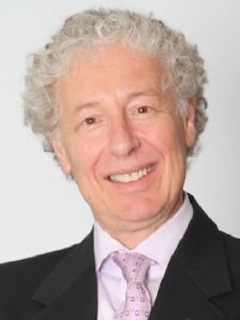Go to
June 30, 2017
Artificial Intelligence (AI): Myths, Realities, and Challenges
Friday, 30 June 2017 at 11:00 in INF 328
Victor Grimblatt, Synopsys Chile R&D Center
Abstract:
Last year, in Seoul, a computer program called AlphaGo defeated 9 dan ranking, and 18 times Go world champion Lee Sedol by a score of 4-1. This year, in Barcelona, SoftBank Founder & CEO, Masayashi Son, in his MWC17 keynote predicted that by 2045 computers made with chips integrating 3 quadrillion transistors, will have a 10,000 IQ. Artificial intelligence is changing the rules of the game: new computing architectures are emerging that lead to new classes of processors in the cloud, as well as in the "things" aimed at revolutionizing our life: robotics, cars, homes, phones, "every thing" gets smarter. It is hard to overstate the promises and the challenges we are facing in the new applications emerging in the age of smarter "every thing".
Moore's law continues, quasi-relentlessly to enable exponentially larger chips manufactured using Angstrom-level process technologies, thus requiring smarter IC design tools; artificial intelligence may have an impact also on EDA, where the sheer complexity, which is approaching the limits of "plain" computation, could be addressed by "teaching" a "brain" how to solve certain classes of problems. Beyond Moore, better, tighter, smarter "integration" of processors and memory, delivering much higher bandwidth, enables new classes of processors - such as TPU - exponentially more parallel in architecture, thus enabling faster "machine learning". On the one hand, AI may help EDA leapfrog the sheer complexity of Angstrom-level process technologies; on the other hand, innovative EDA may help AI happen.
Our entire industry is under pressure to de-risk and speed-up the critical intersections. Smartness is "every thing" !
About the speaker:
 Victor Grimblatt has an engineering diploma in microelectronics from Institut Nationale Polytechnique de Grenoble (INPG - France) and an electronic engineering diploma from Universidad Tecnica Federico Santa Maria (Chile). He is currently R&D Group Director and General Manager of Synopsys Chile, leader in Electronic Design Automation (EDA). He opened the Synopsys Chile R&D Center in 2006. He has expertise and knowledge in business and technology and understands very well the trends of the electronic industry; therefore, he is often consulted for new technological business development.
Victor Grimblatt has an engineering diploma in microelectronics from Institut Nationale Polytechnique de Grenoble (INPG - France) and an electronic engineering diploma from Universidad Tecnica Federico Santa Maria (Chile). He is currently R&D Group Director and General Manager of Synopsys Chile, leader in Electronic Design Automation (EDA). He opened the Synopsys Chile R&D Center in 2006. He has expertise and knowledge in business and technology and understands very well the trends of the electronic industry; therefore, he is often consulted for new technological business development.
Before joining Synopsys, he worked for different Chilean and multinational companies, such as Motorola Semiconductors, Honeywell Bull, VLSI technology Inc., and Compass Design Automation Inc. He started to work in EDA in 1988 in VLSI Technology Inc. where he developed synthesis tools being one of the pioneers of this new technology. He also worked in embedded systems development in Motorola semiconductors.
In 1990 he was invited by professor McCluskey to present his work in Logic Synthesis at the CRC - Stanford University. He has published several papers in EDA and embedded systems development, and since 2007 he has been invited to several Latin American Conferences (Argentina, Brazil, Chile, Mexico, Peru and Uruguay) to talk about Circuit Design, EDA, and Embedded Systems. From 2006 to 2008 he was member of the "Chilean Offshoring Committee" organized by the Minister of Economy of Chile. In 2010 he was awarded as "Innovator of the Year in Services Export". In 2012 he was nominated to best engineer of Chile. In 2016 he was awarded as "Member of the Year" by Bristol Who's Who. He is also member of several Technical Program Committees on Circuit Design and Embedded Systems. Since 2012 he is chair of the IEEE Chilean chapter of the CASS. Since 2016 he is President of the Chilean Electronics and Electrical Industry Association.
Secondary navigation
- January 29, 2018
- August 30, 2017
- Past seminars
- 2016 - 2017 Seminars
- 2015 - 2016 Seminars
- 2014 - 2015 Seminars
- 2013 - 2014 Seminars
- 2012 - 2013 Seminars
- 2011 - 2012 Seminars
- 2010 - 2011 Seminars
- 2009 - 2010 Seminars
- 2008 - 2009 Seminars
- 2007 - 2008 Seminars
- 2006 - 2007 Seminars
- August 31, 2007
- June 29, 2007
- June 20, 2007
- June 5, 2007
- May 30, 2007
- May 16, 2007
- May 15, 2007
- April 24, 2007
- March 27, 2007
- March 14, 2007
- February 9, 2007
- February 8, 2007
- January 12, 2007
- December 5, 2006
- November 14, 2006
- October 31, 2006
- October 27, 2006
- October 26, 2006
- October 20, 2006
- September 20, 2006
- September 20, 2006
- September 20, 2006
- September 19, 2006
- 2005 - 2006 Seminars
- August 23, 2006
- August 22, 2006
- June 26, 2006
- June 20, 2006
- June 16, 2006
- June 7, 2006
- June 6, 2006
- May 30, 2006
- May 17, 2006
- May 10, 2006
- April 27, 2006
- April 12, 2006
- March 31, 2006
- March 29, 2006
- March 22, 2006
- March 15, 2006
- February 27, 2006
- February 8, 2006
- January 25, 2006
- January 19, 2006
- January 18, 2006
- January 17, 2006
- January 11, 2006
- November 30, 2005
- November 23, 2005
- November 2, 2005
- October 26, 2005
- October 25, 2005
- October 5, 2005
- September 28, 2005
- 2005 Seminars

